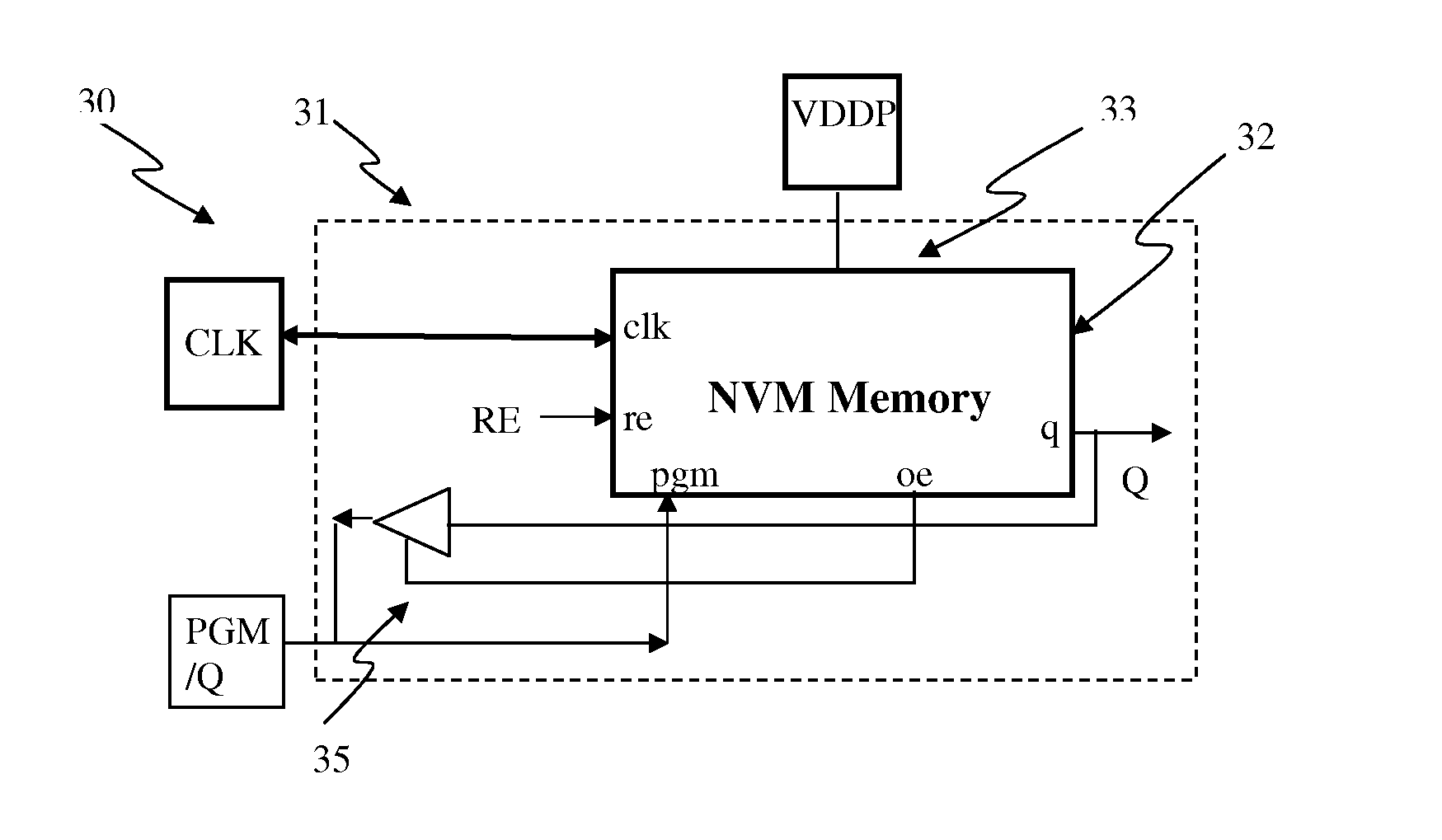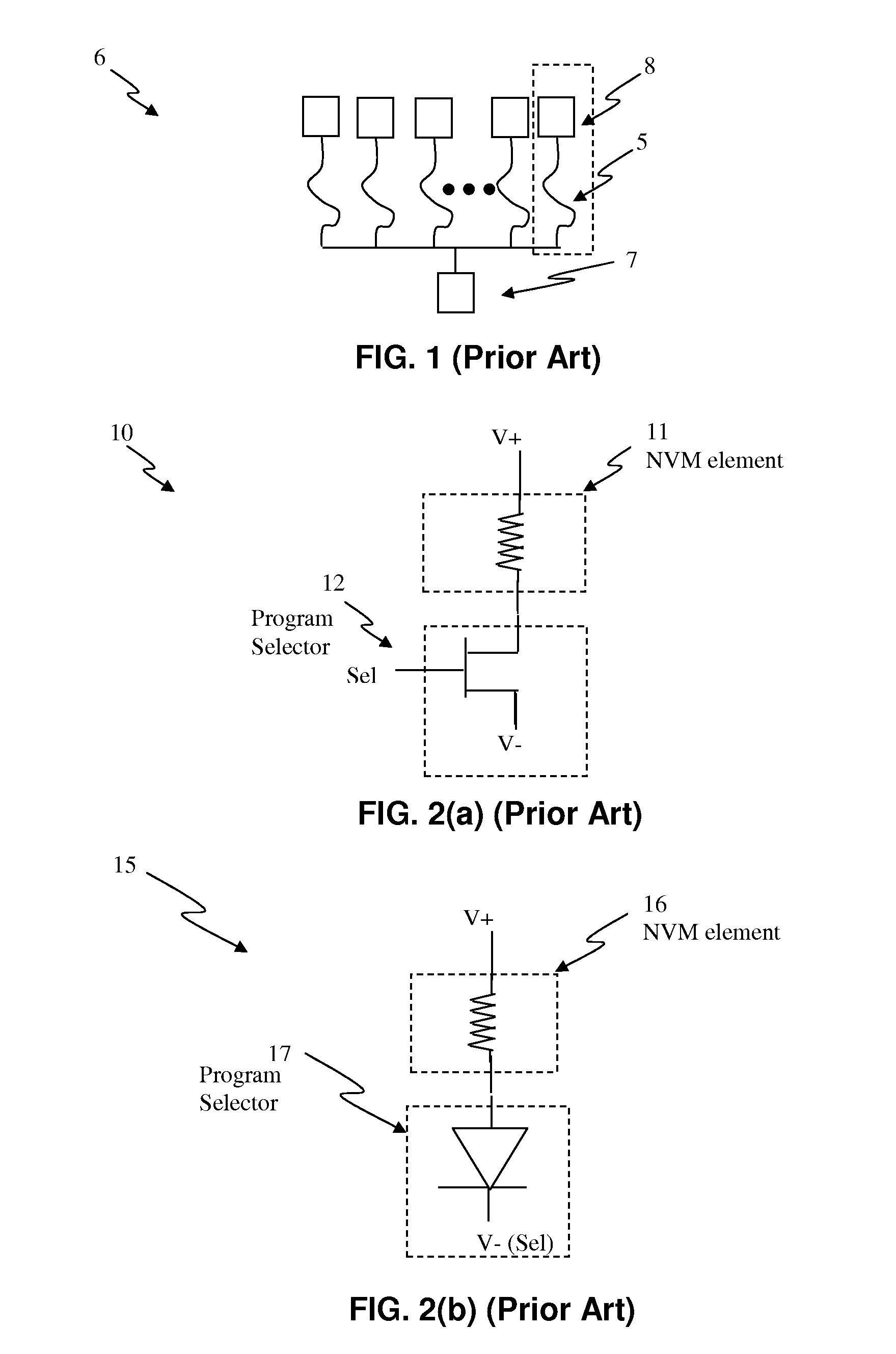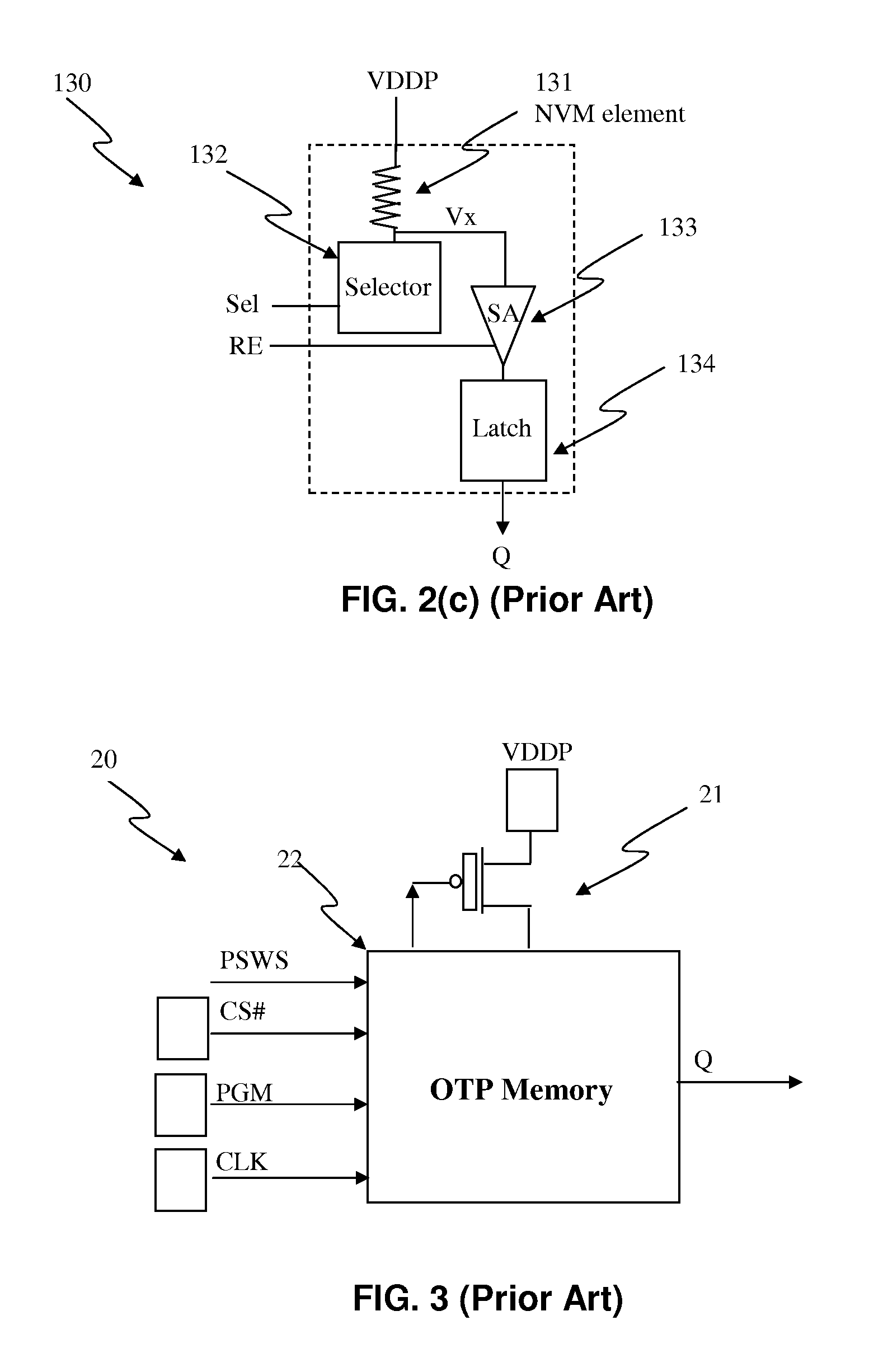Low-Pin-Count Non-Volatile Memory Interface with Soft Programming Capability
a non-volatile memory and programming capability technology, applied in static storage, digital storage, instruments, etc., can solve the problems of large footprint of otp memory to be integrated into an integrated circuit, high program current, and damage to shared pins or nearby interlayer dielectrics
- Summary
- Abstract
- Description
- Claims
- Application Information
AI Technical Summary
Benefits of technology
Problems solved by technology
Method used
Image
Examples
Embodiment Construction
[0073]The invention relates to a low-pin-count non-volatile memory (NVM) having reduced area and footprint. In one embodiment, the low-pin-count non-volatile memory can use an interface that makes use of a minimum of three pins (i.e. VDDP, CLK, and PGM) external to an integrated circuit. In another embodiment, the low-pin-count non-volatile memory can use an interface that makes use of a minimum of two pins (i.e. VDDP and CLK) external to an integrated circuit. The interface not only can use only a few external pin but also can share several internal pins with the rest of integrated circuit to thereby reduce area and footprint. Moreover, if desired, the few external pins can be further multiplexed with the other pins so that no additional pins are needed. In one embodiment the interface can pertain to a low-pin-count OTP interface for an OTP memory so that the OTP memory can be easily integrated into an integrated circuit.
[0074]Simply employing a serial interface is not sufficient f...
PUM
 Login to View More
Login to View More Abstract
Description
Claims
Application Information
 Login to View More
Login to View More - R&D
- Intellectual Property
- Life Sciences
- Materials
- Tech Scout
- Unparalleled Data Quality
- Higher Quality Content
- 60% Fewer Hallucinations
Browse by: Latest US Patents, China's latest patents, Technical Efficacy Thesaurus, Application Domain, Technology Topic, Popular Technical Reports.
© 2025 PatSnap. All rights reserved.Legal|Privacy policy|Modern Slavery Act Transparency Statement|Sitemap|About US| Contact US: help@patsnap.com



